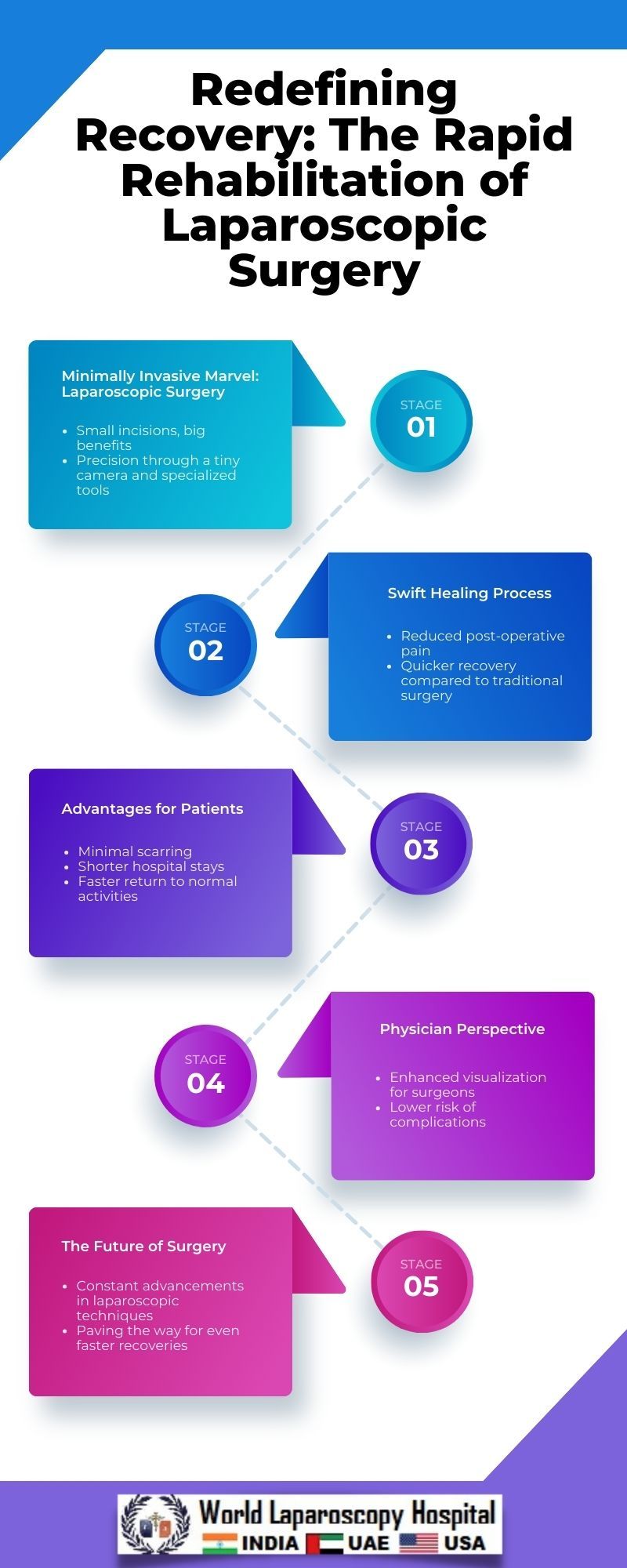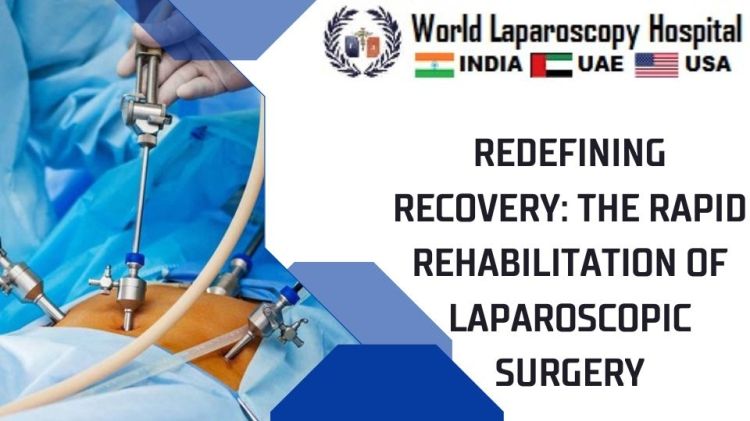Redefining Recovery: The Rapid Rehabilitation of Laparoscopic Surgery
Introduction:
In recent years, the realm of surgical procedures has undergone a transformative shift with the advent of laparoscopic surgery. This groundbreaking technique has not only revolutionized traditional surgical approaches but has also paved the way for rapid patient rehabilitation. This article delves into the intricate details of laparoscopic surgery, exploring its evolution, benefits, and the unprecedented impact it has had on patient recovery.

The Genesis of Laparoscopic Surgery:
Laparoscopic surgery, also known as minimally invasive surgery, emerged in the 1980s as a revolutionary alternative to open surgeries. Unlike conventional methods that involve large incisions, laparoscopic procedures utilize small incisions through which a camera and specialized instruments are inserted. This shift marked a paradigm change in the field, promising reduced trauma, shorter hospital stays, and faster recovery.
Advantages of Laparoscopic Surgery:
Reduced Trauma and Scarring:
The hallmark of laparoscopic surgery lies in its minimally invasive nature. Small incisions significantly decrease trauma to surrounding tissues, leading to reduced pain and discomfort for patients. Furthermore, the cosmetic impact is profound, as these surgeries leave minimal scarring compared to traditional open procedures.
Faster Recovery Time:
The smaller incisions and reduced trauma translate into quicker recovery times. Patients undergoing laparoscopic surgery often experience shorter hospital stays, allowing them to return to their daily lives and routines sooner than those who undergo open surgeries.
Lower Risk of Infections:
The risk of postoperative infections is notably lower in laparoscopic procedures. The smaller incisions and reduced exposure of internal organs contribute to a decreased likelihood of infections, promoting a safer and healthier recovery process.
IInnovations in Laparoscopic Techniques:
Robot-Assisted Laparoscopy:
The integration of robotic systems in laparoscopic surgery has further elevated precision and control. Surgeons can now perform intricate procedures with enhanced dexterity, making it possible to navigate challenging anatomical structures with greater ease. This has not only expanded the scope of laparoscopic surgeries but has also contributed to improved patient outcomes.
Single-Incision Laparoscopy:
As technology advances, surgeons are exploring new frontiers with single-incision laparoscopy. This approach involves conducting an entire surgery through a single small incision, often hidden in the natural folds of the body. While this technique is still evolving, it holds promise for further minimizing patient trauma and optimizing recovery times.
Conditions Treated with Laparoscopic Surgery:
Gastrointestinal Disorders:
Laparoscopic surgery has become the gold standard for treating various gastrointestinal conditions, including appendicitis, gallbladder disease, and colorectal disorders. The ability to navigate through the abdominal cavity with precision has made these procedures not only effective but also less invasive.
Gynecological Procedures:
In the realm of gynecology, laparoscopic surgery has become integral for procedures such as hysterectomy, ovarian cyst removal, and endometriosis treatment. The reduced impact on surrounding tissues has made these surgeries particularly beneficial for female patients.
Urological Interventions:
Laparoscopic techniques have also found applications in urological surgeries, including prostatectomy and nephrectomy. The advantages of reduced blood loss, shorter hospital stays, and faster recovery make laparoscopic approaches increasingly preferred in urological settings.
Challenges and Future Directions:
Learning Curve for Surgeons:
While laparoscopic surgery offers numerous benefits, mastering the technique requires specialized training. Surgeons must navigate a learning curve to become proficient in the use of laparoscopic instruments and the interpretation of images from the camera. However, ongoing advancements in surgical education and simulation technologies are addressing these challenges.
Cost Considerations:
The initial costs associated with laparoscopic equipment and training can be substantial. However, the long-term benefits, including reduced hospitalization costs and faster recovery times, often outweigh the initial investment. As technology evolves and becomes more widely adopted, it is expected that costs will decrease over time.
Further Integration of Artificial Intelligence:
The future of laparoscopic surgery is closely tied to the integration of artificial intelligence (AI). AI-driven systems have the potential to enhance surgical precision, optimize decision-making, and streamline postoperative care. From assisting in real-time image analysis to providing personalized recovery plans, AI is poised to play a pivotal role in shaping the future of laparoscopic surgery.
Case Studies and Success Stories:
Patient Testimonials:
Personal narratives of patients who have undergone laparoscopic surgery provide valuable insights into the positive impact of this technique on their lives. Stories of reduced pain, faster recovery, and a quicker return to normal activities underscore the real-world benefits of laparoscopic procedures.
Notable Surgical Achievements:
Highlighting specific cases where laparoscopic surgery has successfully addressed complex medical conditions can serve as inspiring examples. From intricate tumor resections to delicate organ reconstructions, showcasing the versatility and efficacy of laparoscopic techniques reinforces their significance in modern healthcare.
Conclusion:
In conclusion, the rapid rehabilitation of laparoscopic surgery represents a watershed moment in the evolution of healthcare. The myriad benefits, from reduced trauma and faster recovery times to the continuous innovation in surgical techniques, position laparoscopic surgery as a cornerstone in modern medicine. As technology continues to advance and healthcare professionals refine their skills, the era of laparoscopic surgery promises a future where patients experience unprecedented outcomes and a swifter return to health.






